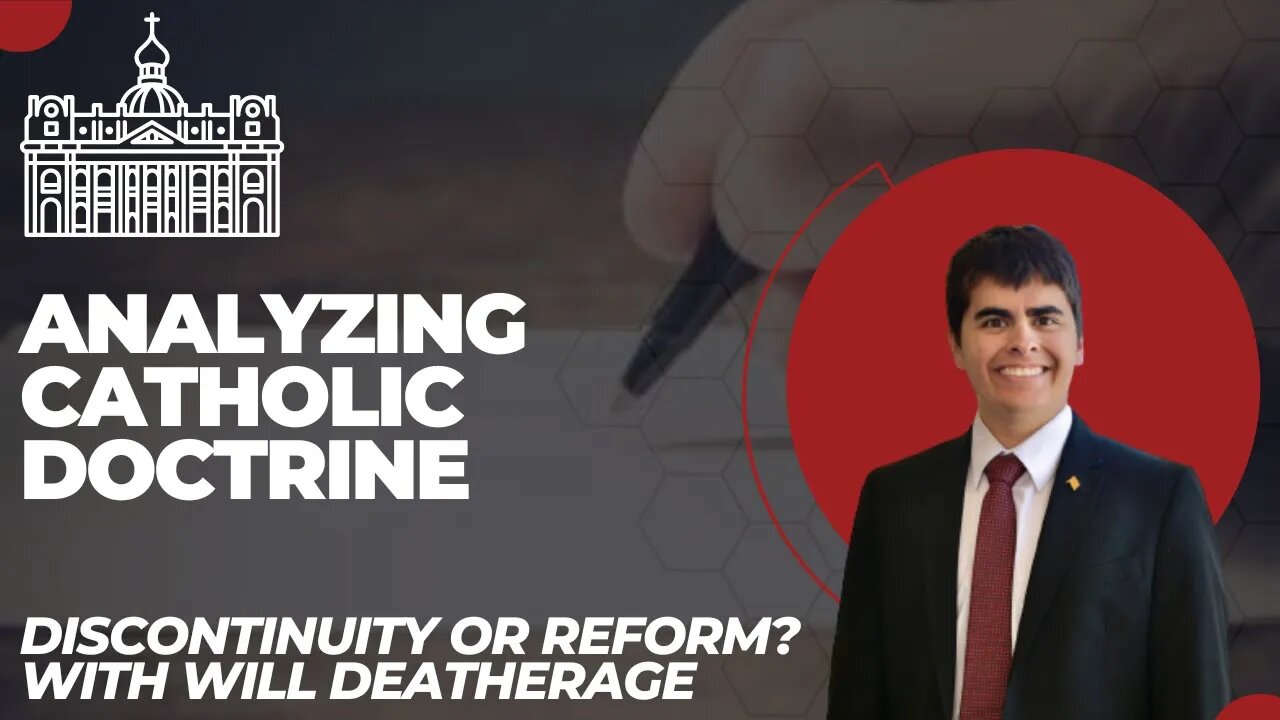Premium Only Content

How to Analyze Catholic Doctrine (Discontinuity or Reform Episode 4)
"Analyzing the source, type, intention, assumption, scope, reception, and interrelation of magisterial statements can help to distinguish their abiding principles from their changeable expressions and applications. These criteria can also be used to evaluate whether two seemingly incompatible magisterial statements are discontinuous with each other, which is precisely what the following chapters will attempt to do with Cantate Domino from the Council of Florence and Lumen Gentium from the Second Vatican Council.”
Read the Thesis Here: https://clarifyingcatholicism.org/essays/theses/florence-and-vatican-ii-on-other-religions-discontinuity-or-reform/
Music: Cabin Fever by ARSNK: https://soundcloud.com/arsnkmusic/cabin-fever
Outro: Bright White by Shifting Shadows https://from-the-forest.bandcamp.com/album/lighthearted-ep
The Second Vatican Council’s theology of other religions is frequently cited as an example of doctrinal discontinuity in the Catholic Church, since the language of Lumen Gentium 16 from Vatican II seemingly contradicts that of Cantate Domino from the Council of Florence. At face value, the two statements appear at odds; whereas the latter condemns non-Christians to hell, the former asserts that practitioners of other religions can be saved. However, an analysis of each document’s source, authoritative level, intention, assumptions, scope, reception, and accompanying theological ideas reveals that they actually express and apply the same dogmatic principles to different time periods and cultural contexts, which constitutes authentic reform, rather than discontinuity.
Series on Ecumenical Councils: https://www.youtube.com/playlist?list=PLPnp45TCxDtPeT-lOsnFhGn2bShv0vAoL
Series on Magisterial Authority: https://www.youtube.com/playlist?list=PLPnp45TCxDtNMKUDRtQ15pZDTBCCj4Xg_
-
 1:58:53
1:58:53
The Charlie Kirk Show
2 hours agoJust Do It + Indict Schiff! + What Is Eastern Orthodoxy? | MacIntyre, Fr. Strickland | 8.12.2025
32.7K6 -
 2:57:31
2:57:31
Right Side Broadcasting Network
5 hours agoLIVE REPLAY: White House Press Secretary Karoline Leavitt Holds a Press Briefing - 8/12/25
50.4K33 -
 6:22
6:22
Michael Heaver
1 hour agoUK Issues CRITICAL Warning
211 -
 2:10:36
2:10:36
Steven Crowder
4 hours agoTrump's Takeover Has the Left Absolutely Seething & It's Glorious
255K157 -
 LIVE
LIVE
Rebel News
1 hour agoAtlantic lockdown rages on, China's latest trade attack, "Transphobic" clampdowns | Rebel Roundup
349 watching -
 LIVE
LIVE
Flyover Conservatives
13 hours agoThe Grid is Hanging By a Thread. Insider Shares All. - Tommy Waller, President of the Center for Security Policy | FOC Show
1,242 watching -
 1:38:50
1:38:50
The Mel K Show
2 hours agoMORNINGS WITH MEL K - Taking Back Our Nation: A Time for Truth & Consequences 7-12-25
19.1K9 -
 1:16:41
1:16:41
Nikko Ortiz
3 hours agoLive - News, Politics, Podcast And Naaah Im Playin We Chillen
34.1K3 -

The Shannon Joy Show
3 hours ago🔥🔥Trump Initiates Lockdown 2.0! Military Occupation In Washington, DC - Is Your City Next?🔥🔥
20.2K11 -
 1:00:11
1:00:11
Trumpet Daily
2 hours ago $1.15 earnedTrumpet Daily LIVE | Aug. 12, 2025
21K